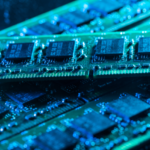Introduction
The rapid advancement of missile technology has transformed the landscape of modern warfare. As nations seek to secure their defense capabilities, ultra missile systems are emerging as one of the most formidable innovations. These advanced systems are designed to achieve unmatched precision, speed, and stealth, marking a new era in military technology. In this article, we explore the latest Design Technologies in Ultra Missile Systems, covering precision, stealth, hypersonic speed, and AI-driven guidance.
Historical Evolution of Missile Systems
Missile technology has evolved significantly since its early days. From simple projectiles and rocket-powered missiles to the guided and multi-stage rockets of today, each phase has brought new enhancements in accuracy and power. Landmark innovations, such as the introduction of the inertial guidance system and the development of intercontinental ballistic missiles (ICBMs), laid the foundation for today’s ultra missile systems.
Modern Technologies in Missile Design
Recent developments in computational design and artificial intelligence have redefined how missiles are built and deployed. Advanced simulations and modeling software enable engineers to predict missile performance accurately. AI and machine learning algorithms have also become integral in enhancing missile guidance, allowing for autonomous decision-making and adaptation during flight.
Ultra Missile Systems: The Next Generation
Ultra missile systems represent the next generation of missile technology, combining speed, precision, and stealth. Unlike conventional missiles, ultra missiles are equipped with enhanced propulsion and guidance systems, which allow them to evade sophisticated defense mechanisms and reach their targets with unprecedented accuracy.
Advanced Guidance Systems in Ultra Missiles
Precision targeting is crucial for modern ultra missiles. With GPS and inertial navigation systems (INS), these missiles are able to adjust their course mid-flight, significantly increasing their accuracy. While GPS is widely used, INS provides a reliable alternative for areas with GPS jamming, ensuring continuous guidance in hostile environments.
Propulsion Technologies in Ultra Missiles
The propulsion of a missile determines its speed, range, and ability to evade defenses. Solid propellants, known for their simplicity and reliability, are commonly used in ultra missiles. However, advancements in hybrid propulsion systems, which combine both solid and liquid fuels, allow for greater control over speed and range, catering to specific mission requirements.
Stealth Technologies in Missile Systems
To outsmart radar and detection systems, ultra missiles incorporate stealth technology. Specialized coatings and streamlined structural designs reduce radar cross-sections, making them nearly invisible to traditional tracking systems. This stealth capability gives these missiles an upper hand, allowing them to approach targets undetected.
Hypersonic Speed: The Ultimate Goal
Achieving hypersonic speed (five times the speed of sound) is a game-changer for missile technology. At such speeds, ultra missiles can reach distant targets in minutes, leaving minimal time for enemy defenses to react. However, designing for hypersonic flight presents significant engineering challenges, particularly around heat resistance and structural integrity at high velocities.
Materials Used in Ultra Missile Construction
The materials used in ultra missiles must withstand intense conditions, such as extreme heat and high pressure. Lightweight carbon composites and heat-resistant ceramics are often employed in missile construction to ensure resilience and reliability. These materials enable missiles to achieve greater speeds without compromising on durability.
Missile Defense Systems and Countermeasures
With ultra missiles posing a heightened threat, advancements in missile defense systems are crucial. Modern defense systems are evolving to include AI-driven interception and laser-based countermeasures to neutralize incoming threats. Ultra missiles, in turn, incorporate countermeasures like electronic jamming to evade interception.
Data Integration and Network-Centric Warfare
Network-centric warfare relies on real-time data sharing between various defense components, enabling ultra missiles to adjust to real-time threats. Satellite links and ground stations continuously feed data to these systems, improving their response times and enhancing their coordination with other defense assets.
Ethical and Strategic Considerations
As military technology advances, ethical concerns around missile proliferation and the potential for civilian harm grow. Balancing innovation with responsibility is crucial, as ultra missile technology holds the potential for both national security and increased global tension if left unchecked.
Future Trends in Missile Design Technologies
Predictive analytics and AI are paving the way for more efficient missile designs, where software predicts the performance of a missile before it’s even built. Additionally, sustainable practices are becoming a consideration, with designers looking to minimize the environmental impact of missile production.
Countries Leading in Ultra Missile Technology
The United States and Russia remain dominant forces in missile technology, continuously testing and deploying new systems. Meanwhile, China and India have made significant strides, investing heavily in ultra missile research and development, pushing the envelope in speed, accuracy, and innovation.
Conclusion
Ultra missile systems are reshaping the future of defense, promising speed, stealth, and precision that were previously unimaginable. As technology continues to evolve, these systems will likely become even more sophisticated, forcing military strategists worldwide to rethink defense tactics and strategies.
For more articles visit: https://adelinetech.com/category/emerging-technology/
FAQs
1. What distinguishes an ultra missile from a traditional missile?
Ultra missiles feature advanced propulsion, guidance, and stealth technologies, allowing them to travel at hypersonic speeds and evade detection.
2. How do ultra missiles evade detection?
They use stealth technology, such as radar-absorbing coatings and streamlined designs, to reduce visibility on radar systems.
3. What role does AI play in missile guidance?
AI enhances missile guidance through autonomous decision-making, allowing missiles to adapt mid-flight based on real-time data.
4. Why is hypersonic speed a significant goal?
Hypersonic speed enables ultra missiles to reach targets quickly, reducing the time enemies have to deploy countermeasures.
5. Are there ethical concerns around ultra missile technology?
Yes, there are ethical concerns regarding the potential for increased global tension and the risk of civilian casualties if this technology is misused.





